
The mink brigade was a name used, at first mockingly, to refer to wealthy or otherwise socially privileged women who supported striking workers in the United States.

The mink brigade was a name used, at first mockingly, to refer to wealthy or otherwise socially privileged women who supported striking workers in the United States.
Anne Morgan, Alva Belmont and other wealthy strike supporters gained the attention of the press who labeled them the "mink brigade" during the New York shirtwaist strike of 1909. [1] [2] The phrase was used again to refer to other women strike supporters, such as Fola La Follette in the 1913 New York Garment Workers Strike, to describe women whose dress and social status would give police pause in arresting them. [3]
mink brigade.

The American Federation of Labor (AFL) was a national federation of labor unions in the United States founded in Columbus, Ohio, in December 1886 by an alliance of craft unions disaffected from the Knights of Labor, a national labor union. Samuel Gompers of the Cigar Makers' International Union was elected president at its founding convention and reelected every year, except one, until his death in 1924. The A.F. of L was the largest union grouping in the United States for the first half of the 20th century, even after the creation of the Congress of Industrial Organizations (CIO) by unions which were expelled by the AFL in 1935 over its opposition to industrial unionism. The Federation was founded and dominated by craft unions throughout its first fifty years, after which many craft union affiliates turned to organizing on an industrial union basis to meet the challenge from the Congress of Industrial Organizations (CIO) in the 1940s. In 1955, the AFL merged with the CIO to create the AFL-CIO, which has comprised the longest lasting and most influential labor federation in the United States to this day.

The Lawrence Textile Strike, also known as the Bread and Roses Strike, was a strike of immigrant workers in Lawrence, Massachusetts, in 1912 led by the Industrial Workers of the World (IWW). Prompted by a two-hour pay cut corresponding to a new law shortening the workweek for women, the strike spread rapidly through the town, growing to more than twenty thousand workers and involving nearly every mill in Lawrence. On January 1, 1912, the Massachusetts government enforced a law that cut mill workers' hours in a single work week from 56 hours, to 54 hours. Ten days later, they found out that pay had been reduced along with the cut in hours.
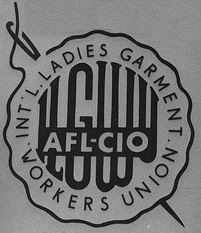
The International Ladies' Garment Workers' Union (ILGWU) was once one of the largest labor unions in the United States, one of the first U.S. unions to have a primarily female membership, and a key player in the labor history of the 1920s and 1930s. The union, generally referred to as the "ILGWU" or the "ILG," merged with the Amalgamated Clothing and Textile Workers Union in the 1990s to form the Union of Needletrades, Industrial and Textile Employees (UNITE). UNITE merged with the Hotel Employees and Restaurant Employees Union (HERE) in 2004 to create a new union known as UNITE HERE. The two unions that formed UNITE in 1995 represented 250,000 workers between them, down from the ILGWU's peak membership of 450,000 in 1969.
The Amalgamated Clothing Workers of America (ACWA) was a United States labor union known for its support for "social unionism" and progressive political causes. Led by Sidney Hillman for its first thirty years, it helped found the Congress of Industrial Organizations. It merged with the Textile Workers Union of America (TWUA) in 1976 to form the Amalgamated Clothing and Textile Workers Union (ACTWU), which merged with the International Ladies' Garment Workers' Union in 1995 to create the Union of Needletrades, Industrial and Textile Employees (UNITE). UNITE merged in 2004 with the Hotel Employees and Restaurant Employees Union (HERE) in 2004 to create a new union known as UNITE HERE. After a bitter internal dispute in 2009, the majority of the UNITE side of the union, along with some of the disgruntled HERE locals left UNITE HERE, and formed a new union named Workers United, led by former UNITE president Bruce Raynor.

Rose Schneiderman was a Polish-born American socialist and feminist, and one of the most prominent female labor union leaders. As a member of the New York Women's Trade Union League, she drew attention to unsafe workplace conditions, following the Triangle Shirtwaist Factory fire of 1911, and as a suffragist she helped to pass the New York state referendum of 1917 that gave women the right to vote. Schneiderman was also a founding member of the American Civil Liberties Union and served on the National Recovery Administration's Labor Advisory Board under President Franklin D. Roosevelt. She is credited with coining the phrase "Bread and Roses," to indicate a worker's right to something higher than subsistence living.

The Women's Trade Union League (WTUL) (1903–1950) was a U.S. organization of both working class and more well-off women to support the efforts of women to organize labor unions and to eliminate sweatshop conditions. The WTUL played an important role in supporting the massive strikes in the first two decades of the twentieth century that established the International Ladies' Garment Workers' Union and Amalgamated Clothing Workers of America and in campaigning for women's suffrage among men and women workers.
Dorothy Jacobs Bellanca was an American labor activist who particularly represented women workers in the garment industry.
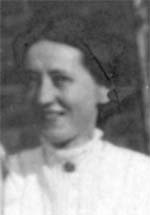
Leonora O’Reilly was an American feminist, suffragist, and trade union organizer. O'Reilly was born in New York state, raised in the Lower East Side of New York City. She was born into a working-class family and left school at the age of eleven to begin working as a seamstress. Leonora O’Reilly’s parents were Irish immigrants escaping the Potato Famine; her father, John, was a printer and a grocer and died while Leonora was the age of one, forcing her mother, Winifred Rooney O’Reilly, to work more hours as a garment worker in order to support Leonora and her younger brother.
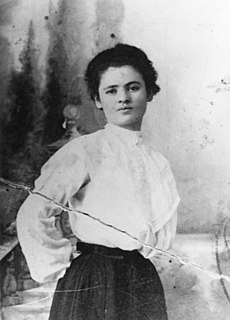
Clara Lemlich Shavelson was a leader of the Uprising of 20,000, the massive strike of shirtwaist workers in New York's garment industry in 1909, where she spoke in Yiddish and called for action. Later blacklisted from the industry for her labor union work, she became a member of the Communist Party USA and a consumer activist. In her last years as a nursing home resident she helped to organize the staff.
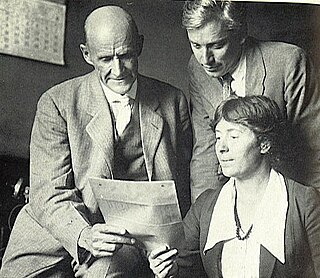
Rose Harriet Pastor Stokes was an American socialist activist, writer, birth control advocate, and feminist. She was a figure of some public notoriety after her 1905 marriage to Episcopal millionaire J. G. Phelps Stokes, a member of elite New York society, who supported the settlements in New York. Together they joined the Socialist Party. Pastor Stokes continued to be active in labor politics and women's issues, including promoting access to birth control, which was highly controversial at the time.

Anne Tracy Morgan was an American philanthropist who provided relief efforts in aid to France during and after World War I and World War II. Morgan was educated privately, traveled frequently and grew up amongst the wealth her father, banker J. P. Morgan, had amassed. She was awarded a medal from the National Institute of Social Science in 1915, the same year she published the story The American Girl. In 1932 she became the first American woman appointed a commander of the French Legion of Honor.

The New York shirtwaist strike of 1909, also known as the Uprising of the 20,000, was a labour strike primarily involving Jewish women working in New York shirtwaist factories. It was the largest strike by female American workers up to that date. Led by Clara Lemlich and the International Ladies' Garment Workers' Union, and supported by the National Women's Trade Union League of America (NWTUL), the strike began in November 1909.

Pauline M. Newman was an American labor activist. She is best remembered as the first female general organizer of the International Ladies' Garment Workers' Union (ILGWU) and for six decades of work as the education director of the ILGWU Health Center.

Flora Dodge "Fola" La Follette was a women's suffrage and labor activist from Madison, Wisconsin, United States. At the time of her death in 1970, The New York Times quoted her on women's suffrage: "A good husband is not a substitute for the ballot." She was the daughter of progressive politician Robert "Fighting Bob" La Follette and lawyer and women's suffrage leader Belle Case La Follette, wife of playwright George Middleton, a contributing editor to La Follette’s Weekly Magazine, an actress, and, with her mother, a chronicler of her father's life.
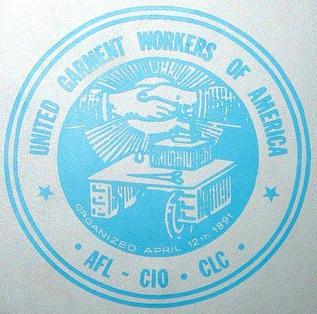
The United Garment Workers of America was a United States labor union which existed between 1891 and 1994. It was an affiliate of the American Federation of Labor.
The Los Angeles Garment Workers strike of 1933 is considered to be one of the most influential strikes in Los Angeles after the passing of the New Deal. The strike is known for being one of the first strikes where Mexican immigrant workers played a prominent role. The garment workers strike occurred in the fall of 1933 in the downtown Garment District in Los Angeles, California. Leaders of the strike, including Rose Pesotta and other members of the International Ladies Garment Workers Union (ILGWU), organized the strike to be culturally orientated in order to include Mexican immigrant workers to fight for union recognition in the garment industry.

Bessie Abramowitz Hillman was a labor activist and founder of the Amalgamated Clothing Workers of America. She led the 1910 Chicago Garment Workers' Strike, which brought about the creation of the Amalgamated Clothing Workers of America labor union in 1914.
The 1982 garment workers' strike, organized by the International Ladies' Garment Workers' Union, was the largest strike in the history of New York City's Chinatown.
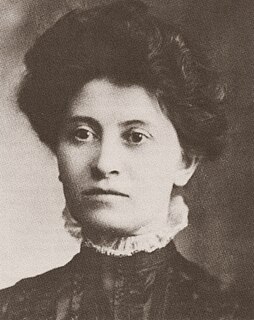
Theresa Serber Malkiel (1874-1949) was a Russian-born American labor activist, suffragist, and educator. She was the first woman to rise from factory work to leadership in the Socialist party. Her 1910 novel, The Diary of a Shirtwaist Striker, is credited with helping to reform New York state labor laws. As head of the Woman's National Committee of the Socialist Party of America (SPA), she established an annual Woman's Day which was the precursor to International Women's Day. In 1911, while on a speaking tour of the American South, she called attention to the problem of white supremacism within the party. She spent her later years promoting adult education for women workers.

Gertrude Barnum was an American social worker and labor organizer.